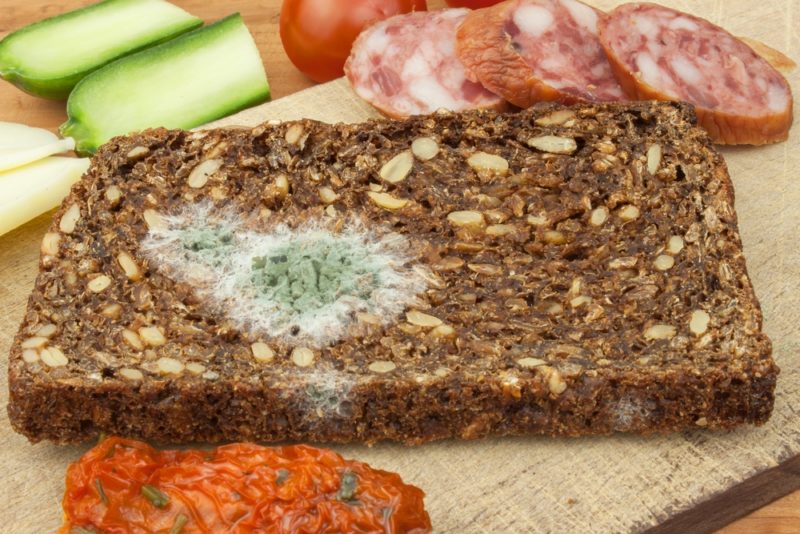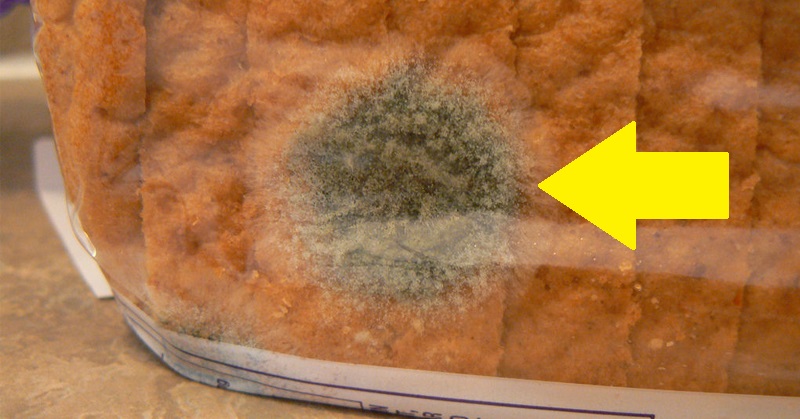If you have a full household, most of your groceries probably get eaten in no time at all. But every once in a while, you’re left with a few food items that have outlasted family meal times for the past few weeks. Bread is often one of them. In fact, you may already be in the habit of checking for mold before you whip up a sandwich. The question is – what do you do when you find moldy bread?
Let’s take a poll. Do you:
A) throw the loaf of bread away instantly, or
B) check to see if there are a few slices of bread you can salvage?
So what’s your answer? If you chose option B, then you need to read this! Experts have a pretty good reason why you need to kick your habit immediately.

Why You Should Never Eat Moldy Bread
A representative from the Department of Agriculture, Mariana Graveley, recently opened up to NPR about the topic, warning that moldy bread is definitely not safe to eat. Graveley explained that mold really can’t be removed from a soft and porous food, such as bread. She said, “With soft food, it’s very easy for the roots [of the mold] or the tentacles, or whatever creepy word you want to use, to penetrate into the bread.”
In other words, once mold has visibly developed in one spot on the bread, there’s a pretty high chance that mold spores have spread throughout the entire loaf. Bagged bread is especially susceptible for mold because it tends to be a warm and humid environment, full of yeast and sugar for mold spores to feed on.

While some foods are more susceptible to mold, others have the ability to withstand it pretty well. Mold has a hard time penetrating hard cheeses because they are greasy and dense, so it’s a little more safe to cut out moldy bits and eat the rest.
As much as it might pain you to throw an entire loaf of bread away, eating moldy bread can make you pretty sick. Some bread molds produce poisonous mycotoxins which can have a serious negative effect on your body. Almost all molds have the ability to cause allergic and respiratory symptoms if you eat them or inhale them by getting to close. There could also be poisonous bugs growing alongside that fuzzy mold and bacteria.
Mold Exposure
There are some detoxification strategies you can take if you realize your mistake early on. But also visit a health care professional if you consume food that may have been contaminated with mold and you experience any of the following symptoms:
- Runny nose
- Cough
- Trouble breathing
- Dizziness and weakness
- Nausea and vomiting
- Blurred vision
- Headache
- Muscle camps
Sources:
Surviving Mold
NPR
Sciencing
Mold Advisor


